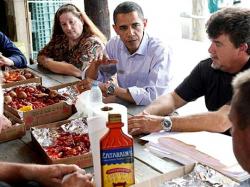Seafood Restaurants Fear Ripples From Spill
June 7, 2010 | 1 min to read

Outside the Gulf of Mexico, where the BP oil spill besets the coastal states, the US seafood industry is bracing for a crisis that is not connected to a region but to a perception: that any seafood, no matter where its origins, may be contaminated by oil.
Far north of the Gulf, restaurant owners and wholesalers are tracking where the oil slick is traveling and trying to glean just how much impact it will have on menu prices and consumer perception. There are already reports of tar balls and oily substances in the Florida Keys, and worries are rising that this summer’s hurricane season will push the oil around Florida's southern tip, where it could enter the Gulf Stream and head north to the fishing grounds off the mid-Atlantic coast.
Jim Filip, owner of Doris & Ed’s, a 90-seat seafood restaurant in Highlands, N.J., is tracking the oil’s path via computer projections he finds on the Internet. He stopped buying seafood from the Gulf four weeks ago, not because he believes it is tainted, but because he doesn’t want to lie to customers who are now asking about the origin of his shrimp and oysters.
To read the rest of the story, please go to: Christian Science Monitor.
Photo by Charles Dharapak, Associated Press
